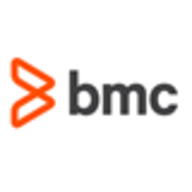

Control-M and PagerDuty Operations Cloud are key players in operational task management, focusing on scheduling and incident response. Control-M holds an advantage in complex task scheduling and environment management, whereas PagerDuty excels in alerting and incident management.
Features: Control-M is preferred for complex scheduling tasks with strong integration capabilities, making it versatile across numerous environments. It excels in automation, particularly on platforms like AS400. PagerDuty shines in alerting and notification services, providing quick and flexible alerts across multiple channels. It is well-suited for on-call management and incident response in dynamic operational settings.
Ease of Deployment and Customer Service: Control-M offers a broad range of deployment options, supporting various environments. It's known for its effective customer support, but response time variability and third-party dependency can impact user experience. PagerDuty focuses on public and private clouds with a more streamlined deployment process. Its customer support is generally effective, though the flexibility of its pricing models concerning support access draws some criticism.
Pricing and ROI: Control-M's pricing structure is seen as expensive, with costs linked to job numbers or task-based licensing. Despite this, the investment often brings substantial operational efficiencies and positive long-term ROI when fully utilized. PagerDuty's pricing is straightforward, based on user subscriptions, which users find flexible, though some express concern at the cost when scaling up. Its ROI is often realized quickly by minimizing downtime and enhancing response times.
The main return on investment with Helix Control-M has been a reduction in downtime and minimization of manual interventions, which has improved our operational efficiency.
You can run a million batch jobs or tasks at night when all of your highly skilled people are at home sleeping.
By implementing automation tools, you can minimize human errors and improve efficiency.
They quickly evolve with changing technology trends, easily adopt new features, and incorporate them into the product.
The technical support is very polite, helpful, and available 24/7.
If something fails at 3 AM in the morning, you need to fix it and get it back up and working really quickly.
Our license doesn't limit our ability to configure Control-M as needed, allowing us to easily create new agents or environments.
It can absorb more workload wherever needed.
As the workload on Control-M increases, its scalability is much higher.
The product was highly scalable, with no limits on the number of applications or event routing rules.
The downtime is higher compared to AWS.
The testing and development phases need to be more rigorous before releasing patches.
Once properly implemented, the system becomes very stable, which is one of its strongest attributes.
They could provide more documentation and tutorials to make the initial setup easier to understand.
We've experienced main problems with MFTE where having one setup means when an error occurs, the entire service goes down.
Documentation should be maintained for all versions since they provided the application.
It would be useful to have a way to define all configurations in code that is similar to how Terraform operates.
The licensing cost is very high, and they often consider switching to IBM Workload Scheduler or other options.
Control-M tends to be more expensive compared to other solutions, but users get great value from it.
Control-M is among the highest-priced solutions in the market.
Automation is more advanced, deployment is fast, and version control has been simplified.
The user interface is comprehensive and lets me view all my jobs on one page, monitor everything, and access the job history.
It is easy to integrate Control-M with technologies for data ops or DevOps processes as things change, and it is not complex compared to other workload automation tools available in the market.
It integrates with multiple applications and is highly customizable, with policies, escalation procedures, and an event routing tool that ensures contacting the right person.
| Product | Market Share (%) |
|---|---|
| Control-M | 4.7% |
| PagerDuty Operations Cloud | 0.3% |
| Other | 95.0% |


| Company Size | Count |
|---|---|
| Small Business | 26 |
| Midsize Enterprise | 13 |
| Large Enterprise | 113 |
| Company Size | Count |
|---|---|
| Small Business | 12 |
| Midsize Enterprise | 11 |
| Large Enterprise | 19 |
Control-M by BMC is engineered to manage hybrid cloud workflows, offering orchestration capabilities starting at $29,000 annually. Aimed at helping growing teams, it efficiently supports cross-environment scheduling and automation needs.
Control-M offers robust cross-platform scheduling, automation, and integration with applications such as SAP and Informatica. Users appreciate its ease of use with a graphical interface, centralized management, and monitoring capabilities. Advanced features, including Managed File Transfer, automated error handling, and real-time alerts, enhance productivity. The ability to unify workflows and support diverse environments makes Control-M a trusted tool in many sectors. While improvements in reporting flexibility and API integration with tools like ServiceNow are needed, addressing performance issues during upgrades could enhance its value. Offering improved support for new technologies and cloud environments is beneficial, with cost-effectiveness being a consideration.
What are the key features of Control-M?Control-M is leveraged in industries like finance for enterprise scheduling and data management, supporting mainframe, Linux, Unix, Windows, and cloud platforms. It contributes to workflow orchestration and workload automation, improving operational efficiency and enhancing IT infrastructure across those environments.
The PagerDuty Operations Cloud is the platform for mission-critical, time-critical operations work in the modern enterprise. Through the power of AI and automation, it detects and diagnoses disruptive events, mobilizes the right team members to respond, and streamlines infrastructure and workflows across your digital operations. The Operations Cloud is essential infrastructure for revolutionizing digital operations to compete and win as a modern digital business.
PagerDuty Features
PagerDuty has many valuable key features. Some of the most useful ones include:
PagerDuty Benefits
There are many benefits to implementing PagerDuty. Some of the biggest advantages the solution offers include:
Reviews from Real Users
Below are some reviews and helpful feedback written by PeerSpot users currently using the PagerDuty solution.
Brandon J., Director of engineering at a wellness & fitness company, says, "The SMS pages and the mobile application are pretty much the top two features."
PeerSpot reviewer Pramodh M., DevSecOps Consultant at a tech services company, comments, “The inbound integrations that PagerDuty provides with most of the DevOps tools are valuable. There is a flexible and easy way of integrating with monitoring tools. It allows us to configure the integration with APIs and plugins as well.”
Syed Mohammad A., Vice President - Operations and Client Services at a financial services firm, mentions, "PagerDuty let us set up rosters based on our shifts. We could assign a hierarchy for how the calls should be escalated and the number of times the call will be transferred between people before it is answered. It makes it easy to access an agent via mobile phone."
A Principal Architect at an energy/utilities company states, “The most important feature that is used is call scheduling. We are also able to actually call IT folks in the case of an emergency.”
We monitor all Process Automation reviews to prevent fraudulent reviews and keep review quality high. We do not post reviews by company employees or direct competitors. We validate each review for authenticity via cross-reference with LinkedIn, and personal follow-up with the reviewer when necessary.